In recent years, there has been a dramatic increase in the number of fraud cases.
While fraud dates back centuries, it has evolved into a sophisticated modern-day threat that affects people globally.
This is largely thanks to the rise of new technologies and the ongoing digitisation of the financial system, which offers threat actors a broader surface for their attacks.
In the past 100 years, there have been several prominent fraud cases that have hit the headlines and had a devastating impact on those involved, costing investors billions of dollars.
Let’s look at the most famous fraud cases of the century.
For Sale: National Architecture
Victor Lustig and The Eiffel Tower
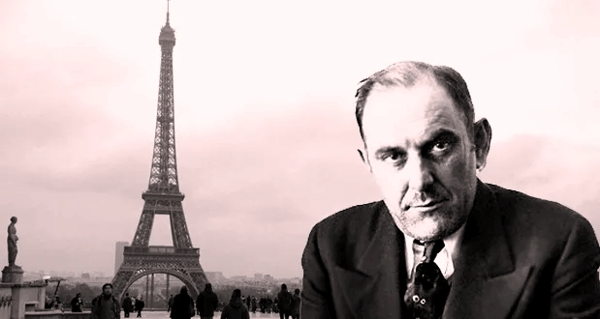
Image Source: Medium
Count Victor Lustig was a master of deception, with his true identity and background remaining a mystery to this day.
The title of ‘Count’ is just one element of his many aliases, his life of crime seeing him operate under 47 different identities.
One of Lustig's most audacious schemes took place in 1925 in Paris, where he convinced individuals in the scrap metal industry that he was a member of the French government.
To feed the ruse, he commissioned stationery carrying the French government’s seal and took residence at the prestigious Hôtel de Crillon.
Under this pretence, he managed to sell the Eiffel Tower, not once, but twice, claiming it had to be dismantled due to engineering faults, costly repairs, and unspecified political issues.
Lustig was finally apprehended by the Secret Service in New York in 1935.
Not that this held him back, as he escaped from the supposedly inescapable Federal Detention Centre in Manhattan by cutting through the window bars and using a handmade rope to scale the building.
Despite his ability to evade the authorities, Lustig was captured again and imprisoned in Alcatraz, eventually succumbing to pneumonia in 1947.
George C. Parker and The Brooklyn Bridge
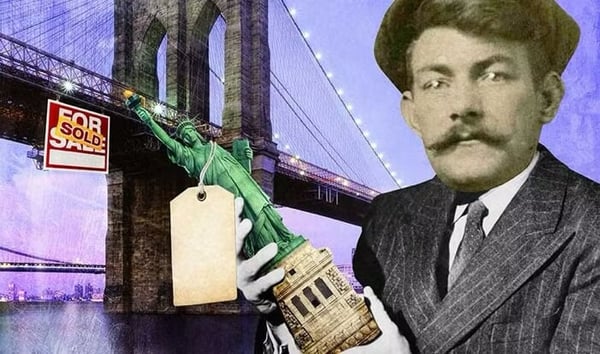
Image Source: NYC Walks
Ever heard the phrase "I have a bridge to sell you"?
It comes from the antics of George C. Parker, who managed to sell ownership of the Brooklyn Bridge 4,160 times.
Parker's scam involving the Brooklyn Bridge began in the 1880s, when he would target newcomers to New York City and convince them that he was the rightful owner of the bridge.
Investors parted with as much as $50,000 to purchase it, planning to profit by installing tolls that charged all who crossed it.
The investors’ hope was short-lived.
The police swiftly shut down any toll booths they attempted to build in the area.
In the end, Parker’s activities became so frequent that Ellis Island officials began warning incoming immigrants that they couldn’t buy public assets.
Brooklyn Bridge wasn’t the only landmark he sold - Parker successfully convinced people to purchase the Statue of Liberty, Madison Square Garden, Ulysses S. Grant's tomb, and the Metropolitan Museum of Art.
Unfortunately for him, detectives eventually apprehended Parker, where he faced charges of larceny, forgery, and impersonating a police officer.
False Promises & Fake Products
Elizabeth Holmes and Theranos

Image Source: NPR
Elizabeth Holmes made bold promises to revolutionise the healthcare industry with her biotech start-up, Theranos, and its diagnostic technology that produced results from a single pinprick of blood.
Theranos claimed it could perform over 240 tests, ranging from cholesterol levels to complex genetic analysis, using much less blood than standard methods.
The concept was seen as a medical breakthrough and caught the attention of many investors, sending Theranos' valuation to $10 billion by 2014.
Subsequent investigations revealed the harsh truth that Theranos' technology was deeply flawed and unreliable.
They showed Holmes knowingly deceived investors by exaggerating its capabilities and using other products to conduct tests.
With the life-threatening consequences of these actions now clear, severe legal consequences and a wave of public backlash aimed at Holmes led to her enterprise’s downfall in 2018.
Holmes and her co-conspirator were found guilty and received lengthy prison terms of 11 and 12 years, along with an order to pay restitution costs of $452 million to their victims.
Charles Ponzi and The Securities Exchange Company
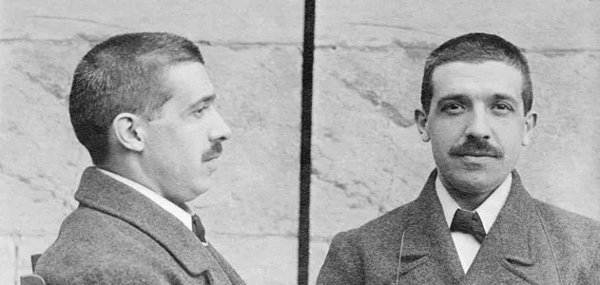
Image Source: Smithsonian Mag
Charles Ponzi was a notorious Italian immigrant who, between 1918 and 1920, orchestrated an international trading scheme that earned him $250,000 a day.
Ponzi's story began in Boston, where he discovered the International Reply Coupon (IRC) created by the United States Postal Service (USPS).
The coupons allowed senders to pre-purchase postage and include it in their letters.
Recipients in other countries could exchange the IRCs for airmail postage stamps, making international correspondence more convenient.
Ponzi first saw the IRC in a letter from Spain, where it was valued at 30 centavos.
In the U.S., the same IRC could be exchanged for five cents, offering a profitable arbitrage opportunity.
Seeing the potential for huge gains, Ponzi devised a plan to buy IRCs from weaker European economies at low prices and sell them in the U.S. at higher rates.
While it began legitimately, Ponzi’s greed led him to turn his trading plan into a large-scale scam, founding the Securities Exchange Company.
He promised potential investors a 50% return on investments within 90 days, claiming he had an extensive network of agents in Europe bulk-buying coupons for him.
However, he never invested the new funds in IRCs.
Instead, he took some money for himself and used the rest to pay earlier investors.
The scheme ran for a while, but when questions arose about his operations, Ponzi's deception soon came to light.
An audit showed he had only $61 worth of postal coupons, and he was arrested for mail fraud.
Ponzi served three and a half years in federal prison and nine more on state charges.
Eventually, he was deported and lived in poverty until his death.
Ponzi’s name became so famous that it is now synonymous with a pyramid scheme.
Would The Real Mona Lisa Please Stand Up?
Wolfgang Beltracchi and The Fake Art Collection

Image Source: The Art Newspaper
Wolfgang Beltracchi rose to fame by orchestrating a forgery scheme that saw him sell counterfeit paintings worth over $100 million.
He posed as the heir to his grandparents’ rare art collection.
Along with his wife, he reproduced works by renowned artists such as Max Ernst and Heinrich Campendonk and sold them worldwide.
Eventually, he was charged with forgery and found guilty of selling 14 fake paintings for $45m in total.
The actual number of fakes he sold is believed to be 50 or more.
During his six-year prison sentence, he was placed in an open prison where he could continue painting.
After his release, he started a new chapter, selling authentic pieces under his own name.
Eduardo De Valfierno and The Mona Lisa
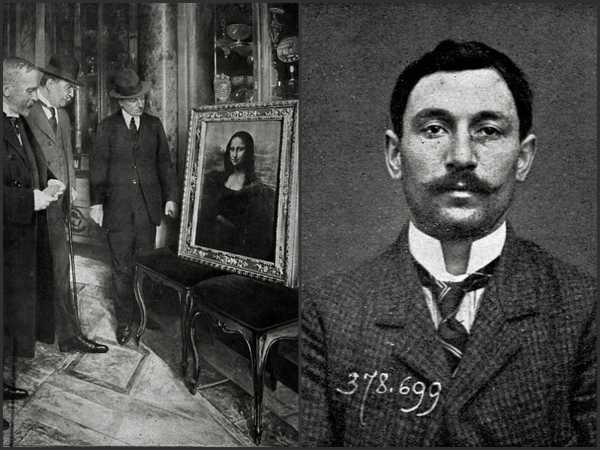
Image Source: The Wire
In 1911, an Argentinian con man named Eduardo de Valfierno allegedly paid a Louvre employee to steal the world’s most famous painting, Leonardo da Vinci’s Mona Lisa.
Yet he had no interest in the real painting. He only needed the world to know it was missing so he could sell his forged copies to underground collectors, leaving the employee to keep the painting.
Valfierno had already commissioned the French art restorer and forger Yves Chaudron to create six replicas before the theft, knowing it would be harder to smuggle copies after the original disappeared.
He shipped the duplicates worldwide in preparation for lucrative sales.
Eventually, the Louvre employee was caught attempting to sell the stolen Mona Lisa.
It was returned to its rightful place in 1913.
Food For Thought
Chinese Milk Scandal

Image Source: CFR
In 2008, some Chinese companies tried to cut costs by watering down milk.
To pass mandatory protein tests, they added melamine to the product - a chemical normally used in plastic.
This raised the milk’s nitrogen content, making it look protein-rich and fooling control tests.
Consumers later suffered kidney problems, with around 300,000 children falling ill and at least six losing their lives.
The issue spread to numerous countries, forcing companies such as Cadbury and Nestle to recall products that were affected.
Even now, many parents find themselves mistrusting infant formula.
Two culprits were eventually executed after being found guilty of selling 1.3 million pounds of tainted milk powder.
The Horse Meat Scandal

Image Source: Irish Times
The European 'horsemeat scandal', also referred to as the 2013 ‘horsemeat crisis’, emerged when horsemeat was unexpectedly found in processed beef products.
This discovery exposed a vast network of fraudulent practices in the food supply chain.
Investigations showed horsemeat had been added to burgers, meatballs, and frozen lasagnes without consumers’ knowledge.
The scandal affected many countries, with companies from France, the United Kingdom, Ireland, and other European nations facing scrutiny.
People worried about potential health risks, since horsemeat hadn’t gone through the same rigorous checks as beef.
They also questioned the adequacy of food regulation, demanding better transparency and accountability from producers and retailers.
In response, European governments worked together to improve food traceability, strengthen testing protocols, and introduce more stringent penalties for food fraud.
What’s In a Name?
Oscar Hartzell and The Drake Estate

Image Source: The Crime Wire
Hartzell was the architect behind the ‘Sir Francis Drake Estate’ fraud, which likely began in 1916.
He targeted anyone with the surname Drake, telling them they had a distant claim to Sir Drake’s estate, worth over $100 billion.
Hartzell claimed he was suing the government to reclaim the property for Drake’s rightful descendants.
He asked each “heir” for an investment, promising hefty returns.
Over several years, Hartzell collected thousands of dollars from Drakes across America.
He even hired agents to gather funds for him while he moved to England.
His lies eventually caught up with him in 1933, when he was deported to the US and given ten years in prison.
He’s believed to have made $800,000 before his arrest and another $500,000 while behind bars.
Harry Gordon and The Fake Funeral

Image Source: Wired
In June 2000, millionaire businessman Harry Gordon faked his own death, claiming he was fleeing Ukrainian gangsters.
Many believe he did it for the life insurance payout.
After a boating accident that “proved” he drowned, Gordon left behind his wife and daughter to begin a new life.
Over the next few years, he lived in 5 different countries under the name Rob Motzel.
While in Auckland, Gordon found a new wife who didn’t know his past until they ran into his brother, who was stunned to see him alive.
Gordon was later arrested while travelling to Sydney on a fake passport.
He pleaded guilty and received a 15-month prison sentence for conspiring to obtain $3.5 million in life insurance payouts, false representation, and possessing falsified travel documents.
Afterwards, he wrote an autobiography called ‘How I Faked My Own Death and Did Not Get Away with It.’
Bad Enterprises
Wells Fargo and Fake Bank Accounts
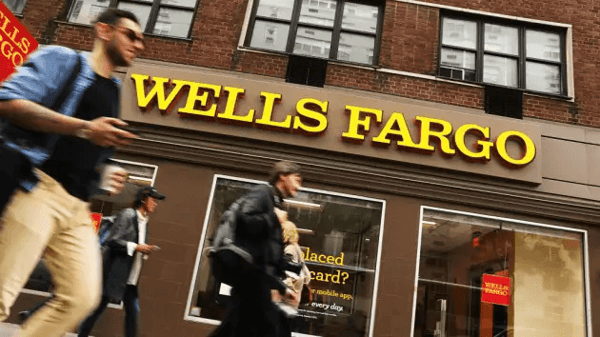
Image Source: CNBC
The Wells Fargo scandal involved the creation of millions of unauthorised bank and credit card accounts by employees in branches across the United States.
They aimed to meet aggressive sales targets, using unethical tactics like forging signatures and creating fake email addresses.
They also moved customers’ money between accounts without telling them.
The Consumer Financial Protection Bureau eventually investigated, leading to a $1 billion fine and severe reputational damage for the bank.
More wrongdoing has come to light, including improper loan charges, unlawful repossessions, and denials of mortgage loan modifications.
Wells Fargo now faces another $2bn repayment to customers and a $1.7bn penalty.
The Enron Bankruptcy (2001)
.jpg?width=600&height=338&name=The%20Enron%20Bankruptcy%20(2001).jpg)
Image Source: BBC
The Enron bankruptcy was one of history’s biggest corporate collapses, involving the Enron Corporation, once a leading energy company in the United States.
At its peak, Enron was a giant in natural gas, electricity, and other commodities trading.
To boost its image of success and profitability, Enron’s CEO embraced mark-to-market accounting, which let the company record projected profits immediately.
This method was flawed and opaque, allowing Enron to inflate its financial figures and attract big investments, causing stock prices to soar.
Eventually, the scandal was exposed.
Enron’s stock plummeted, and the company filed for bankruptcy after revealing it was billions of dollars in debt.
Thousands of employees lost their jobs, and investors faced massive losses.
A major accounting firm associated with Enron also shut down.
100 Years of Fraud
Looking back over the past century, we can see that fraud comes in many shapes and forms - from the food you eat to your bank.
With the rise in online services, digital platforms present new threat vectors we must stay aware of and guard against.
Fraud won’t vanish completely, but learning from these stories and making clear efforts to protect ourselves is vital.
References
How a Con Artist Effortlessly Sold the Eiffel Tower Twice, Shenbaga Lakshmi, 2024
The Brooklyn Bridge - If You Believe That, I Have a Bridge in Brooklyn to Sell to You, NYC Walks, 2024
A Judge Rules That Elizabeth Holmes Cannot Remain Free During Appeal, NPR, 2023
In Ponzi We Trust, Smithsonian, 2021
Notorious Forger Wolfgang Beltracchi on Ethics, the Art Market, and How to Make a Great Fake, The Art Newspaper, 2018
The Time Machine: The Grand Theft of the Mona Lisa, The Wire, 2017
The 2008 Milk Scandal Revisited, Council on Foreign Relations, 2014
A Decade On: How the Horsemeat Scandal Changed the Way the World Thinks of Food Safety, Irish Times, 2023
Oscar Hartzell and the Francis Drake Fortune, The Crime Wire, 2024
Lost and Found: Other People Who Tried to Vanish, Wired, 2009
Wells Fargo Shares Fall on Fears Strong First Quarter Profit May Be Reduced by Regulatory Settlement, CNBC, 2018
The Collapse of Enron and the Dark Side of Business, BBC, 2021
Reviewed by
Sam Kendall, 31.12.24
Sabrina McClune, 05.06.24
.png?)
 Sabrina McClune
Sabrina McClune
 Sabrina McClune
Sabrina McClune











.jpg?width=600&height=338&name=The%20Enron%20Bankruptcy%20(2001).jpg)
